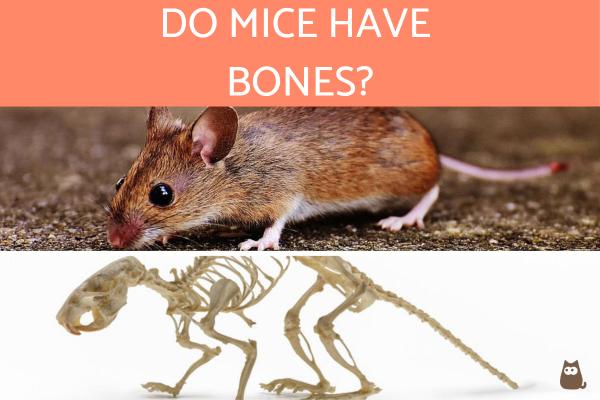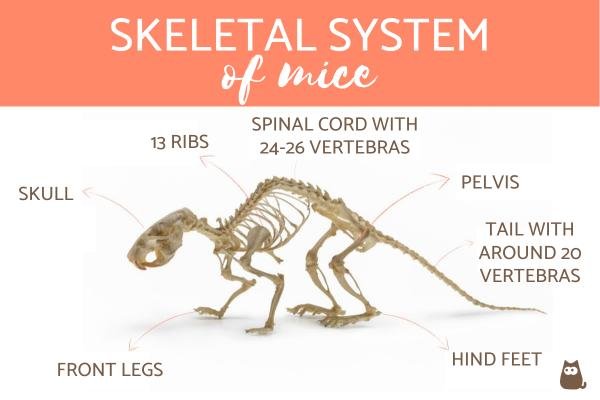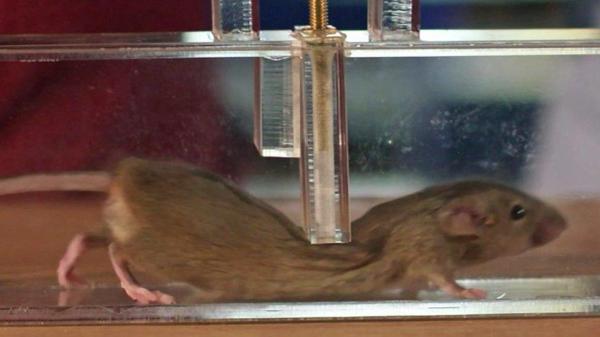
Mice are interesting little rodents. Not only are they cute and intelligent but it's amazing to see how they can fit in just about anywhere. Leaving us to wonder, do mice have bones?
In this AnimalWised article we're going to talk about the skeletal system of mice and debunk certain myths about mice. Continue reading to learn more!
Do mice have bones?
Contrary to popular belief, yes, mice do have bones. The myth that mice do not have bones sparked from their amazing ability to fit in extremely small areas. However, mice are able to do this thanks to their extremely flexible ribs.
Mice, and even rats, are vertebrae. This means that they have bones and cartilage just like us. They are simply more flexible by design so they can survive in the wild. Now, that we've determined that they do have bones, let's take a look at their skeletal system.
The skeletal system of mice
The skeleton of a mice is very similar to that of any other mammal and especially that of any other rodent, since it has an elongated skull, a long vertebral column made up of a large number of vertebrae, four walking legs or extremities consisting of humerus, ulna and radius, and femur, tibia and fibula, a series of phalanges and other bony structures such as the ribs or pelvis. These are the main functions performed by some of the bones present in mice:
- Skull: its function includes protecting the most important structure, the brain. At the same time it supports other organs, such as the eyes.
- Spinal column: allows the body to articulate and protects the spinal cord, mainly. For this reason, the importance of the spinal column in avoiding injuries to the nervous system. It is made up of 24-26 vertebras.
- Ribs: they form the rib cage of the animal, housing and protecting important organs such as the heart or lungs. Their ribs are made up of 13 very flexible bones.
- Pelvis: protects the pelvic organs while providing mechanical support. In addition, it articulates the lower part of the trunk with the hind limbs.
- Limb bones: together with the muscles, it allows the animal to move. The hind legs are longer, allowing it to be propelled very well.
Although physically similar, it is important not to mistake a rat for a mouse. To help you differentiate them, we encourage you to read our article on the differences between rats and mice.

How many bones does a mouse have?
As we've previously mentioned, mice have bones and cartilage, just like us. In other words, they are vertebrae animals that have a skull, brain, limbs, etc. This allows them to develop a complex nervous system along with highly developed sense organs.
So, how many bones do mice have? Mice have 7 cervical vertebrae, 13 thoracic vertebrae, 4-6 lumbar vertebrae, a variable number of caudal vertebrae, 13 pairs of ribs and a myriad of bone structures that make up the skull, scapula, metacarpus, metatarsus, the phalanges, etc. Therefore, we can affirm that mice have more than 200 small bones throughout their body. Fun fact: Adult humans have 206 bones!
You may also be interested in our article on if snakes have bones.
Why are mice so flexible?
We are often amazed at the ability mice have to pass through gaps of only a few centimeters wide. Although they are small animals, whose size does not in itself pose a great problem to pass through quite narrow places, the explanation for this great flexibility lies in the flexibility that they have between each one of the small vertebrae that make up the spine and ribs of the mouse. This way, they can bend very easily, giving birth to the incorrect myth that they do not have bones.
They do this by first checking that their head can pass through because they know that if their head can go through, the rest of their body will be able to squeeze through too. But, how do these small rodents know if their head can fit? They do this with their sensory organs, their whiskers or little hands. These help them determine the size and distance that surrounds them. Then, they decide whether it's a good idea to go through or find another way.

Other fun facts about the skeleton of mice
Now that you know what the skeletal system of mice is like and the reason behind their great flexibility, you may also find other information about the bones of these small animals interesting. Among their fun facts, we can highlight:
- Mice not only have flexible bones but also very strong bones too.
- They have five cranial ridges that unite different bones.
- Their tail is made up of approximately 20 vertebras, which are called coccygeal vertebrae.
- Young female mice have ligaments that connect the pubic bones. After giving birth, these bones diverge.
- The thorax is quite narrow, which also allow them to enter small spaces, giving the skeleton great elasticity.
- The skeletons of all rodents (rats, hamsters, mice, etc.) are very similar to each other, giving these mammals great agility when moving through different places.
If you want to read similar articles to Do Mice Have Bones?, we recommend you visit our Facts about the animal kingdom category.